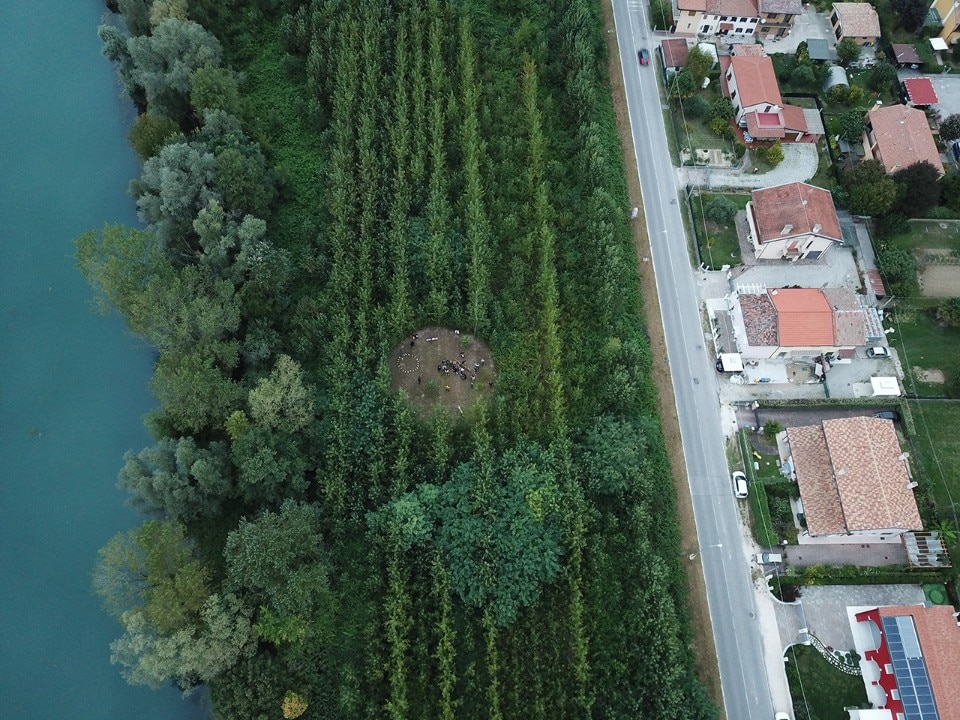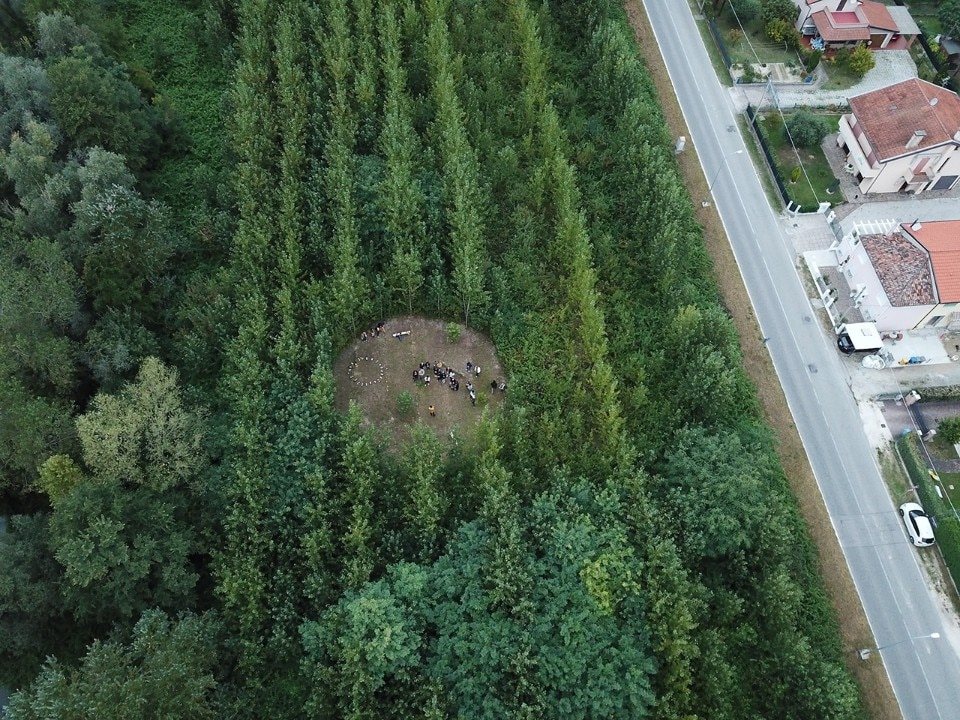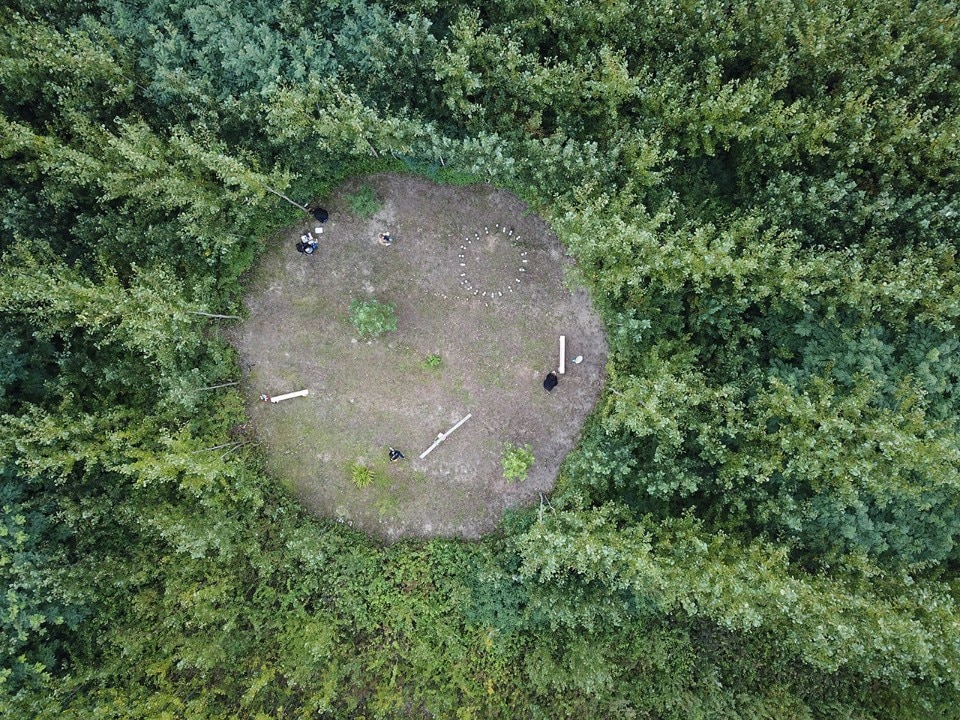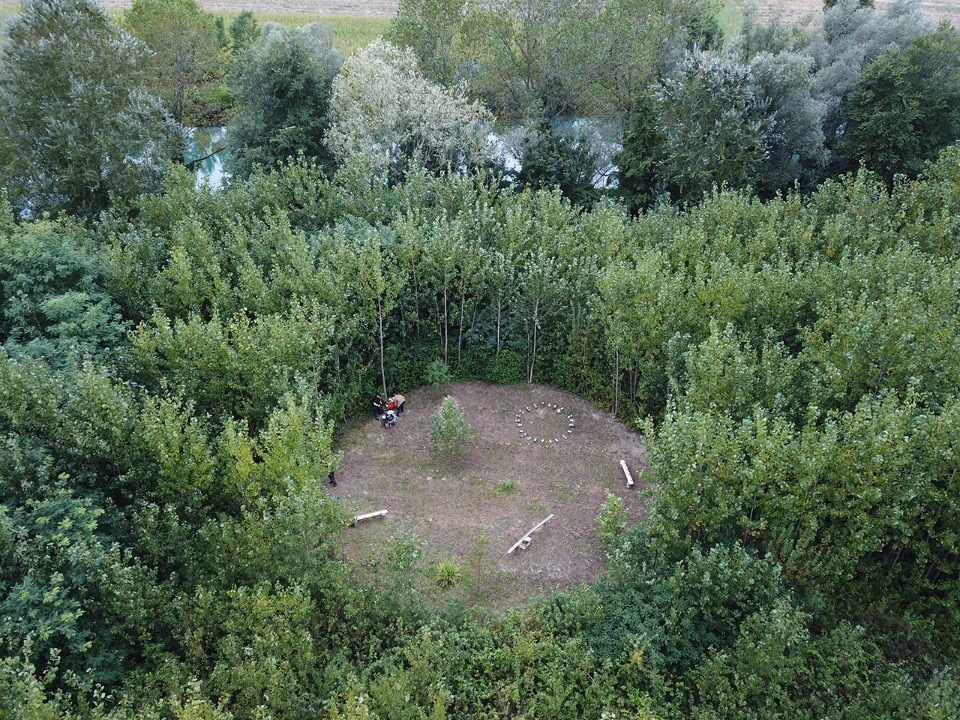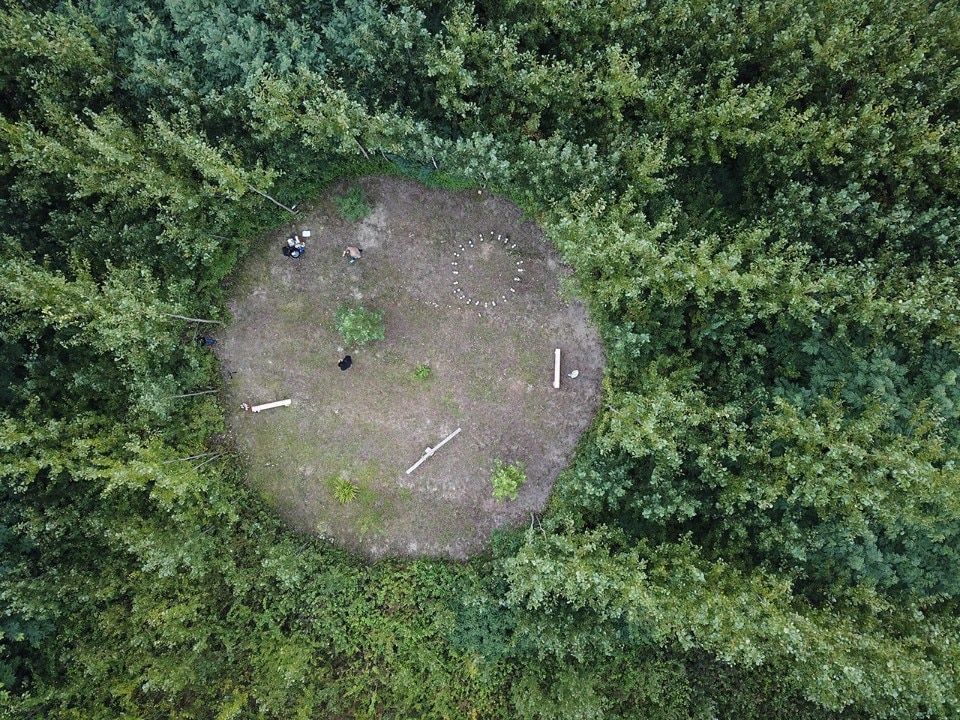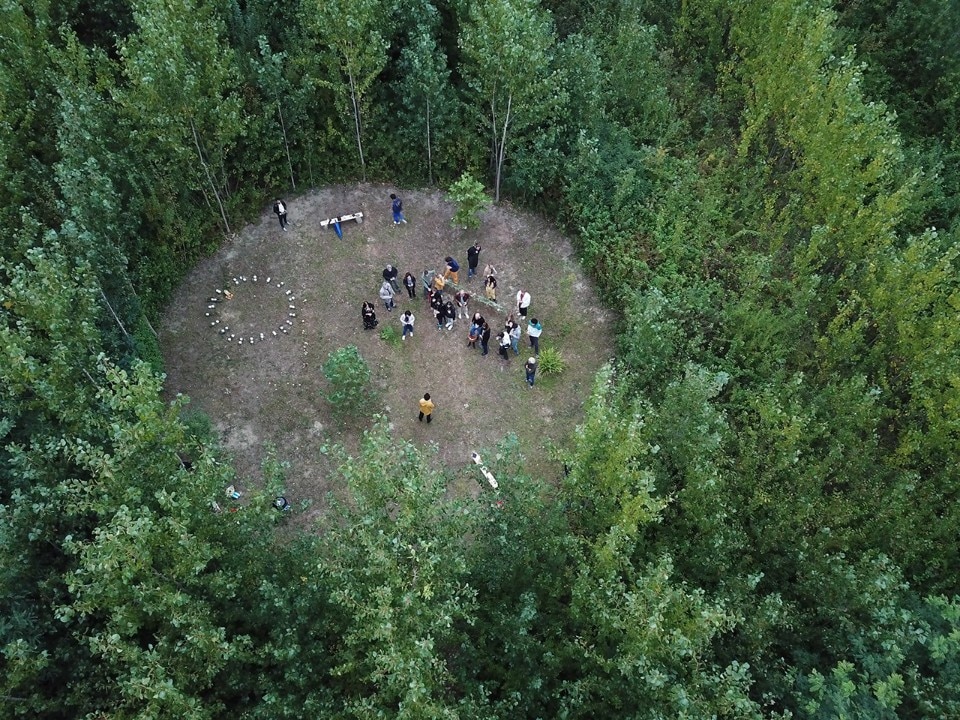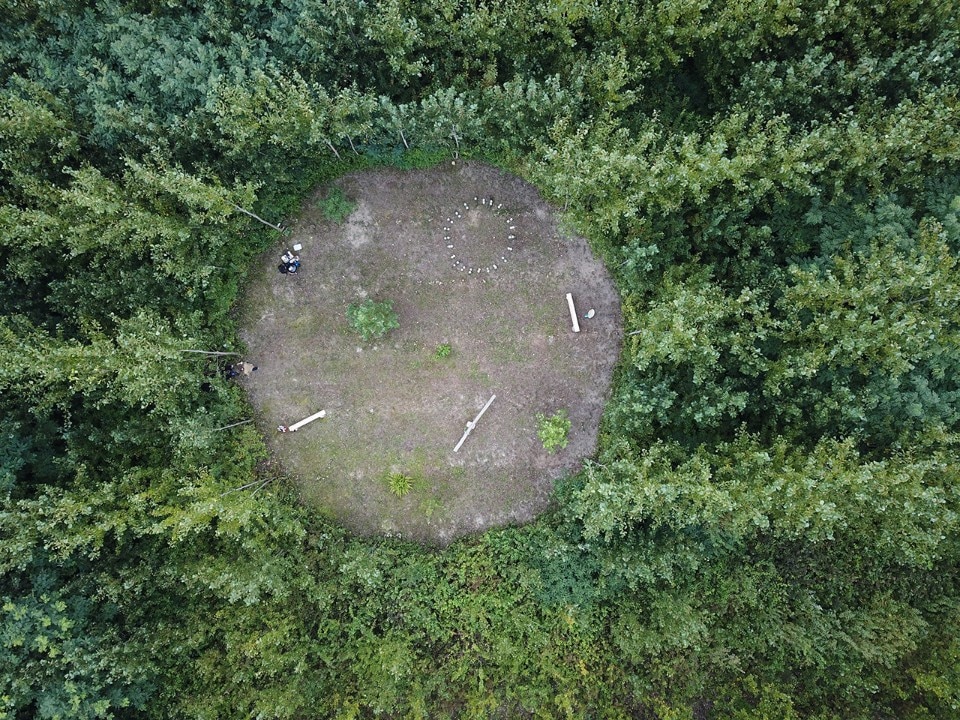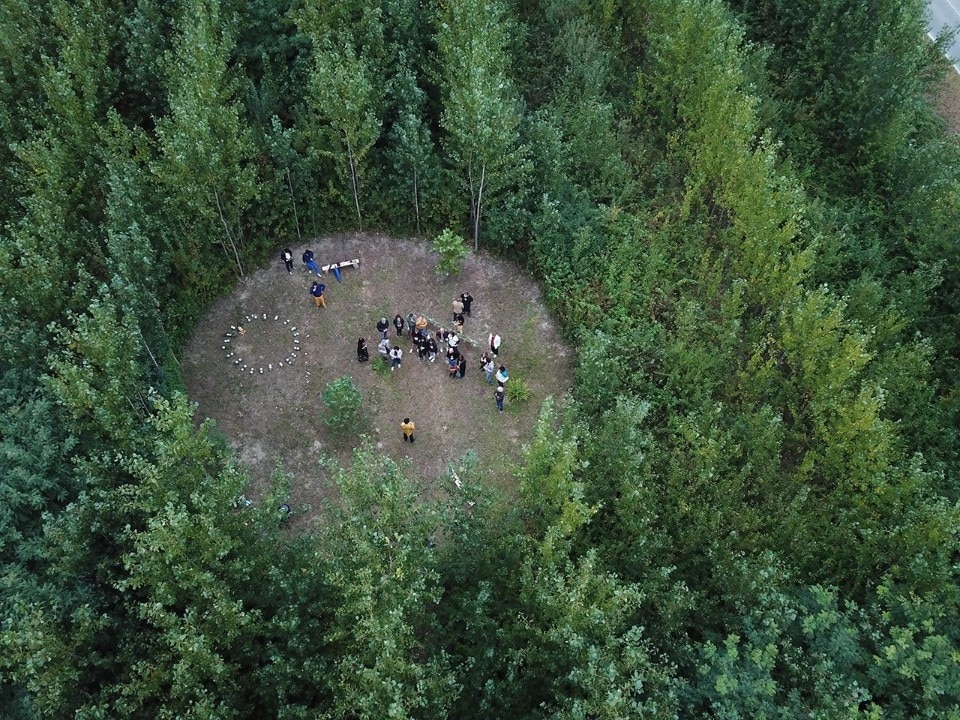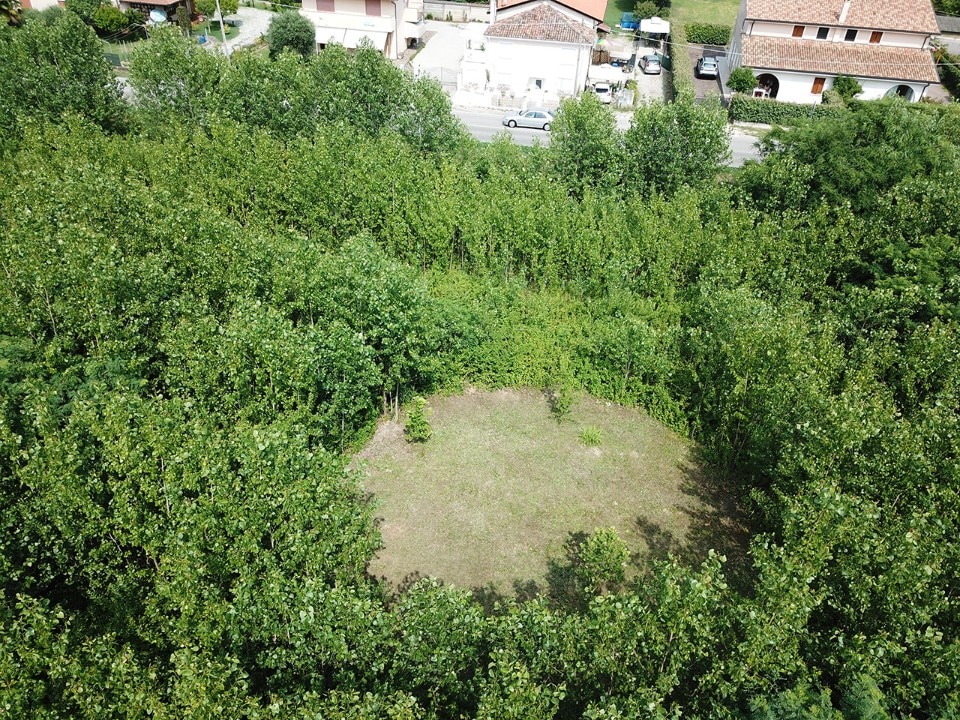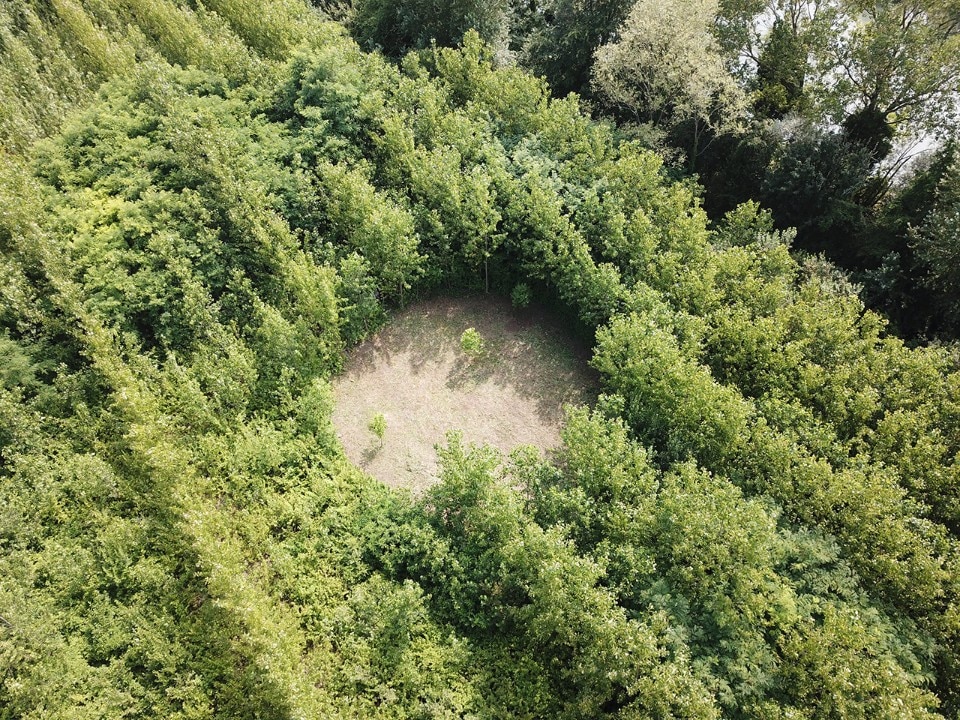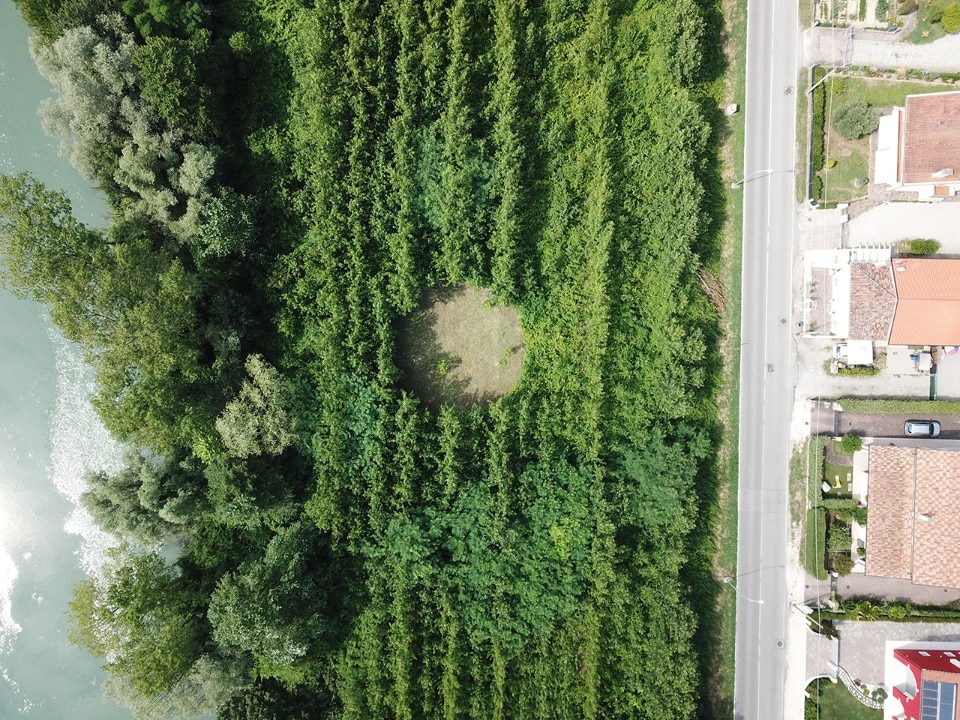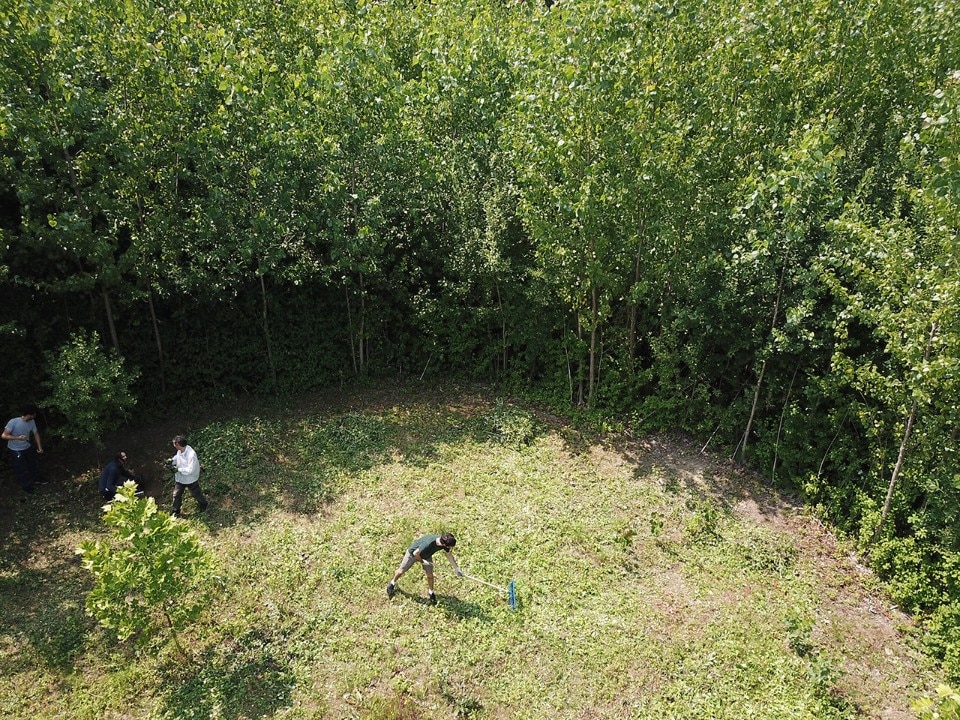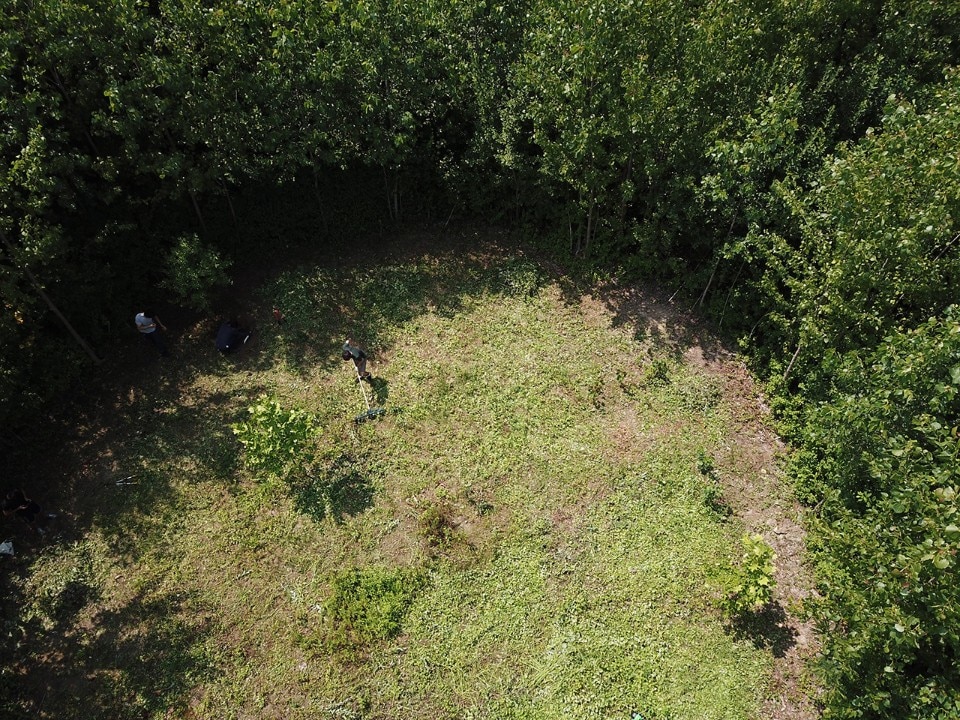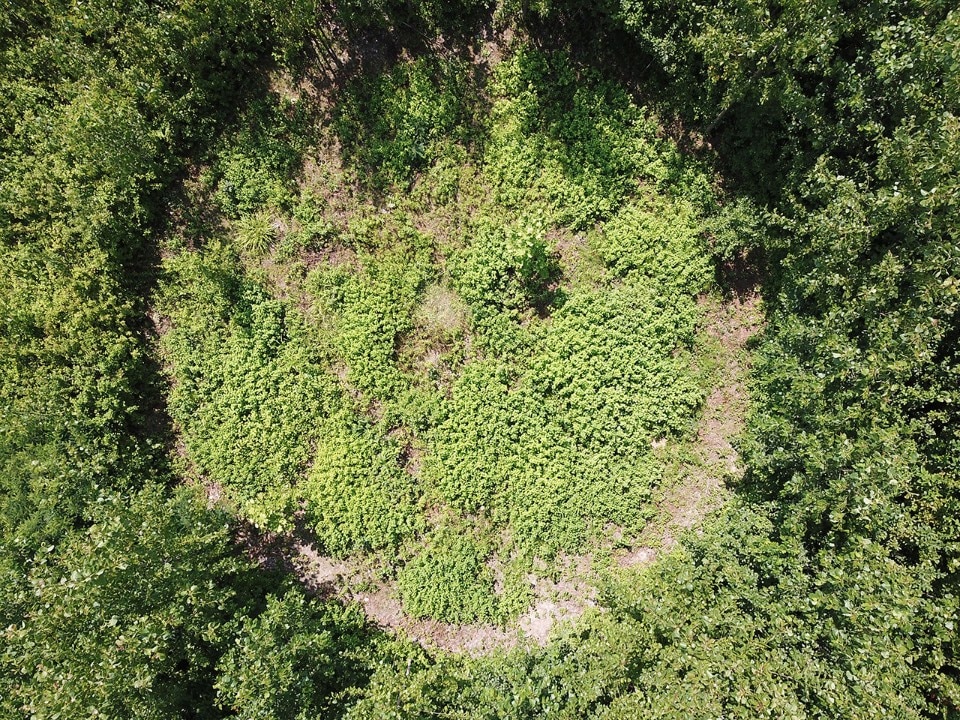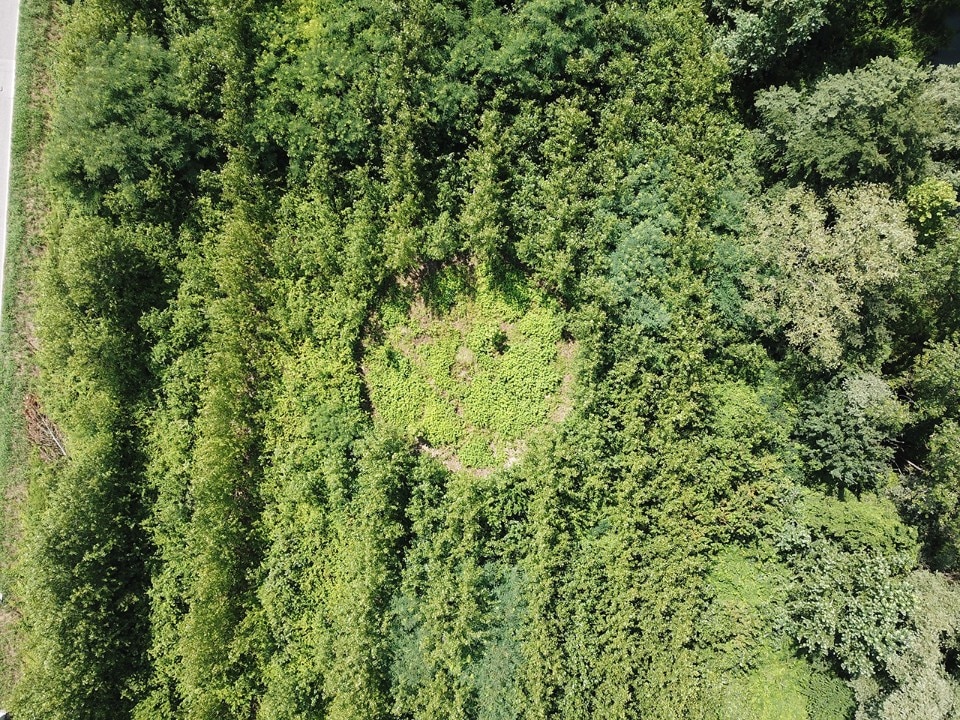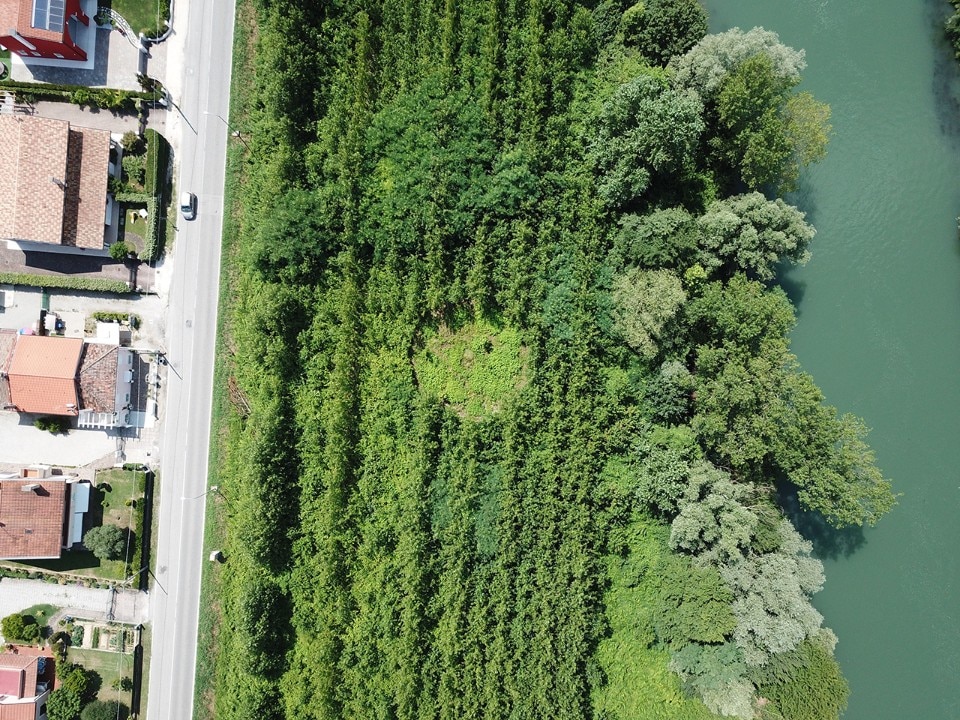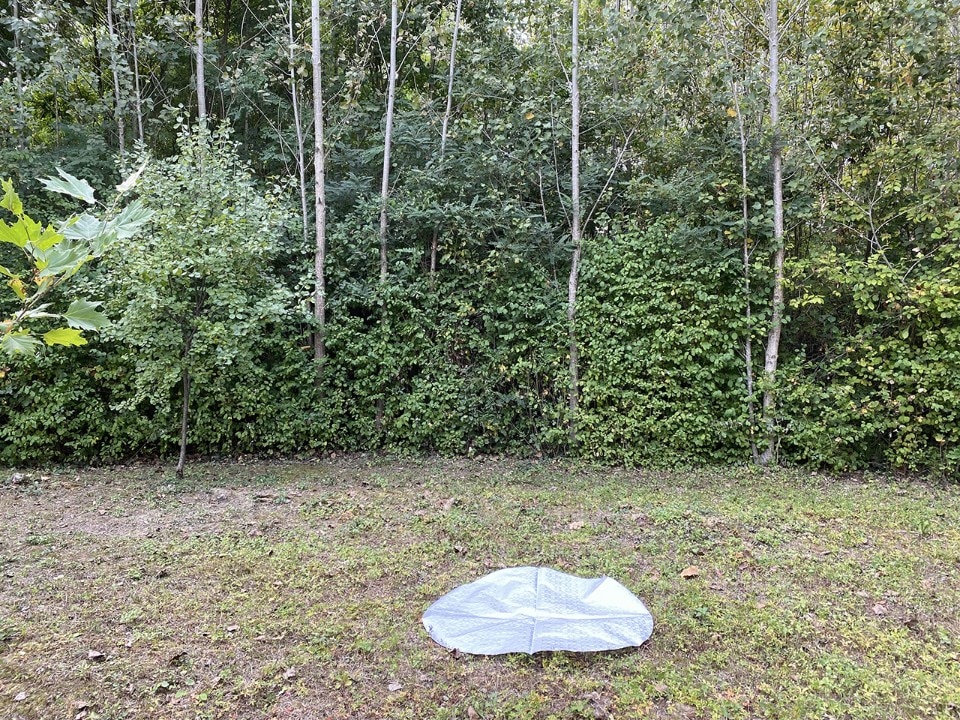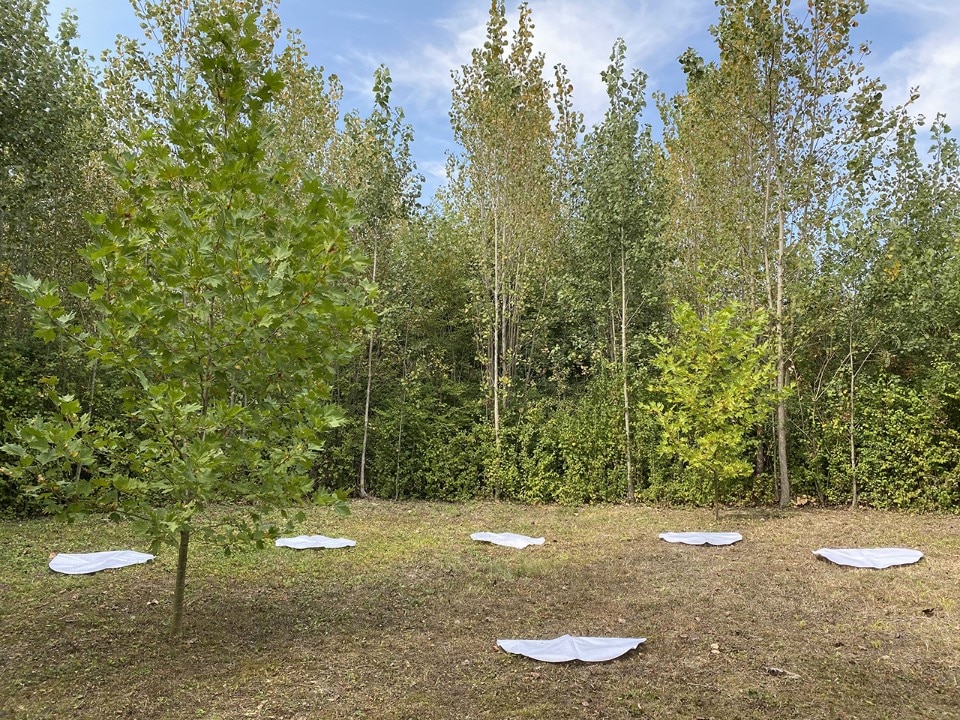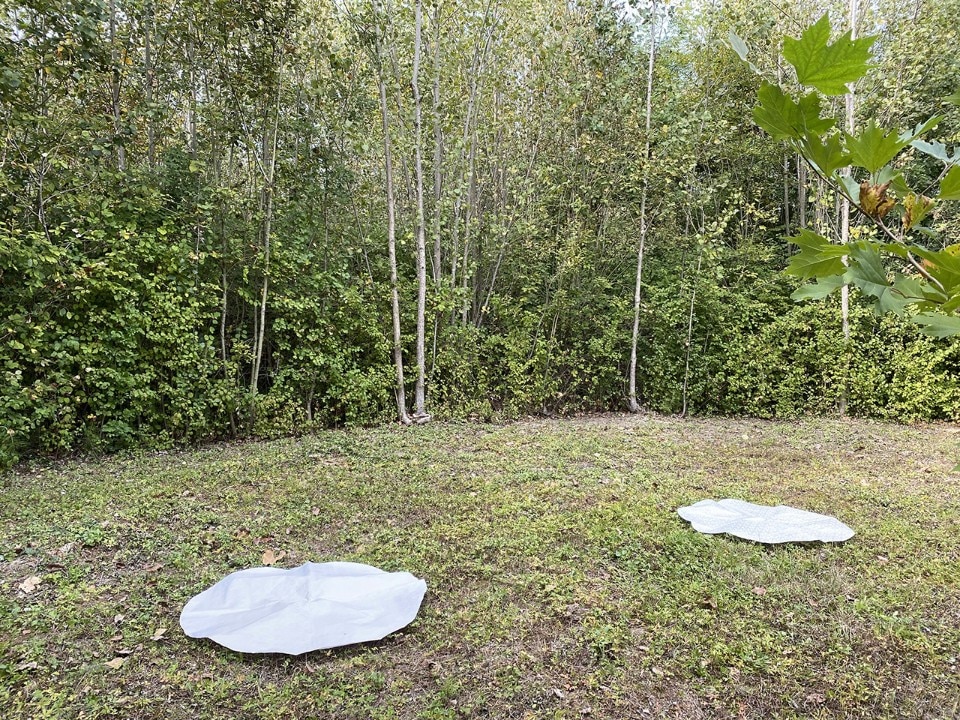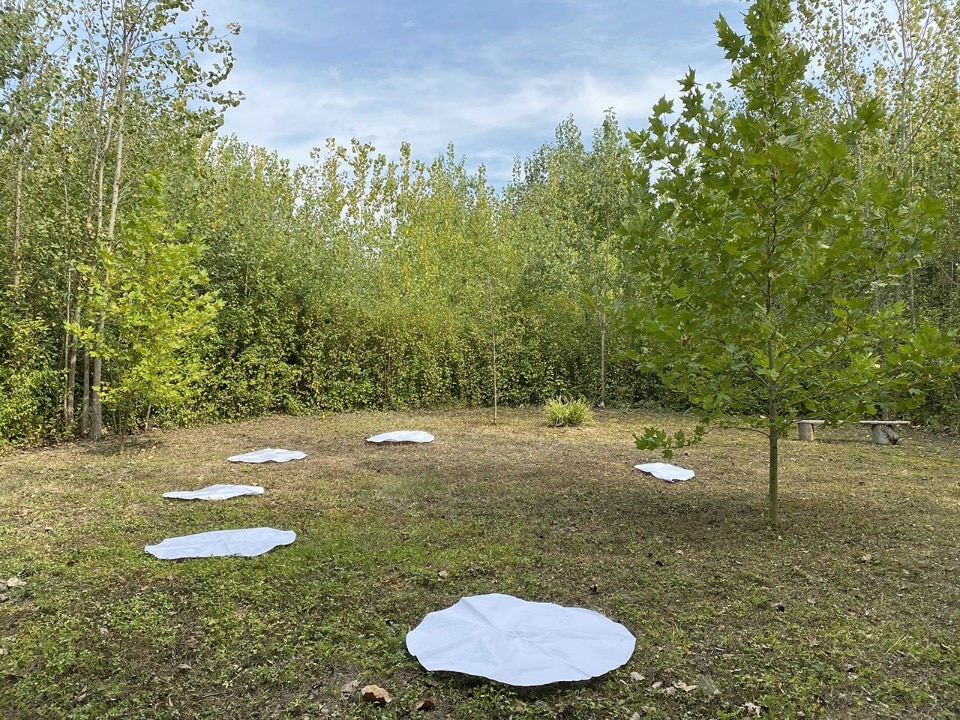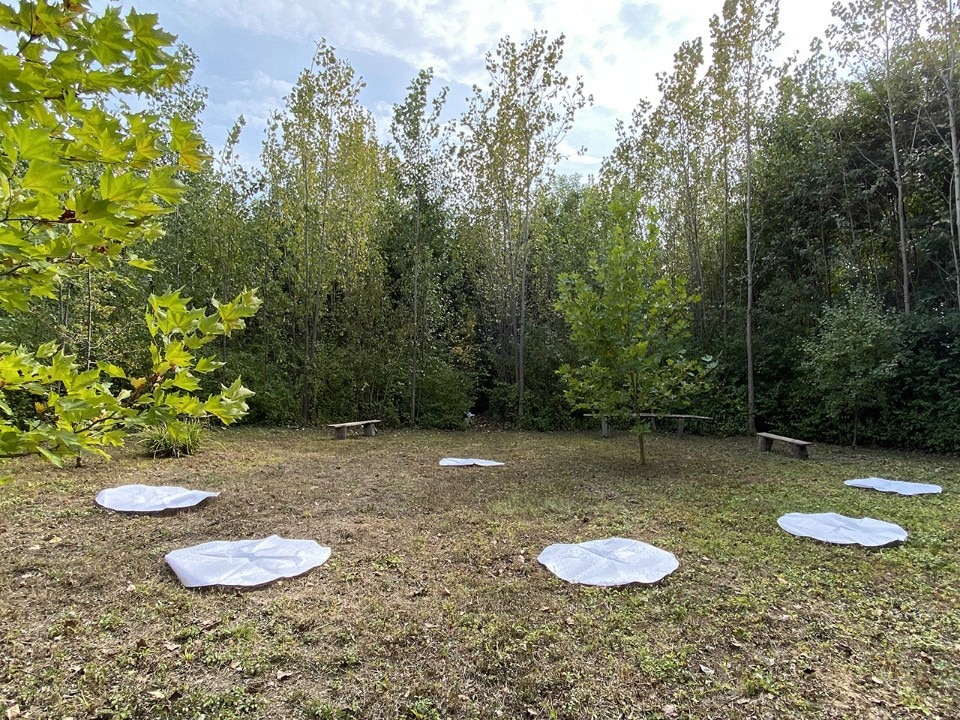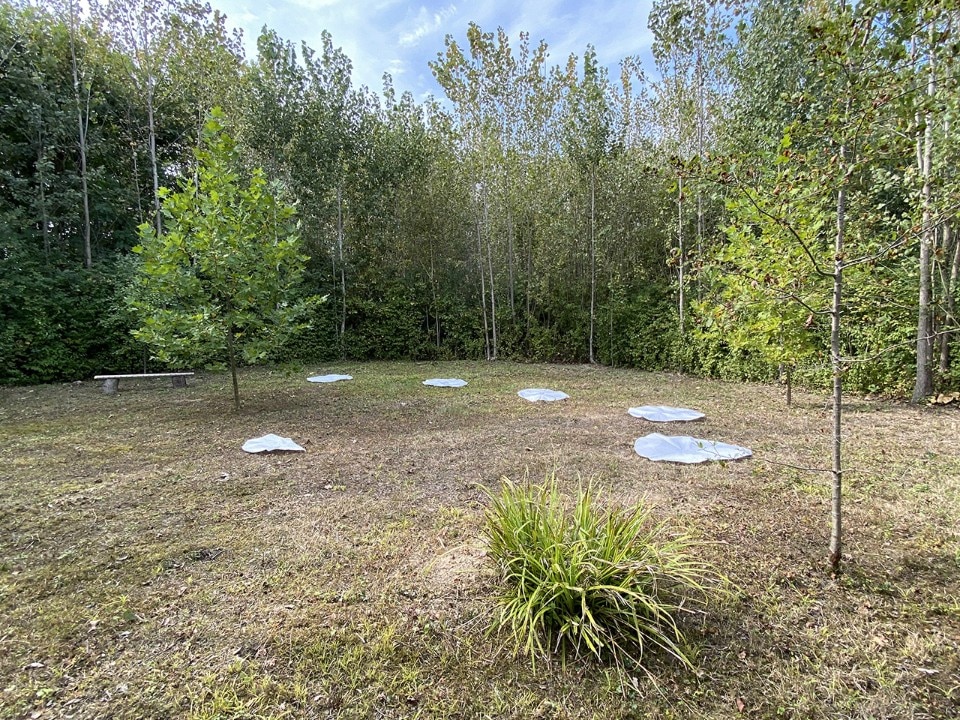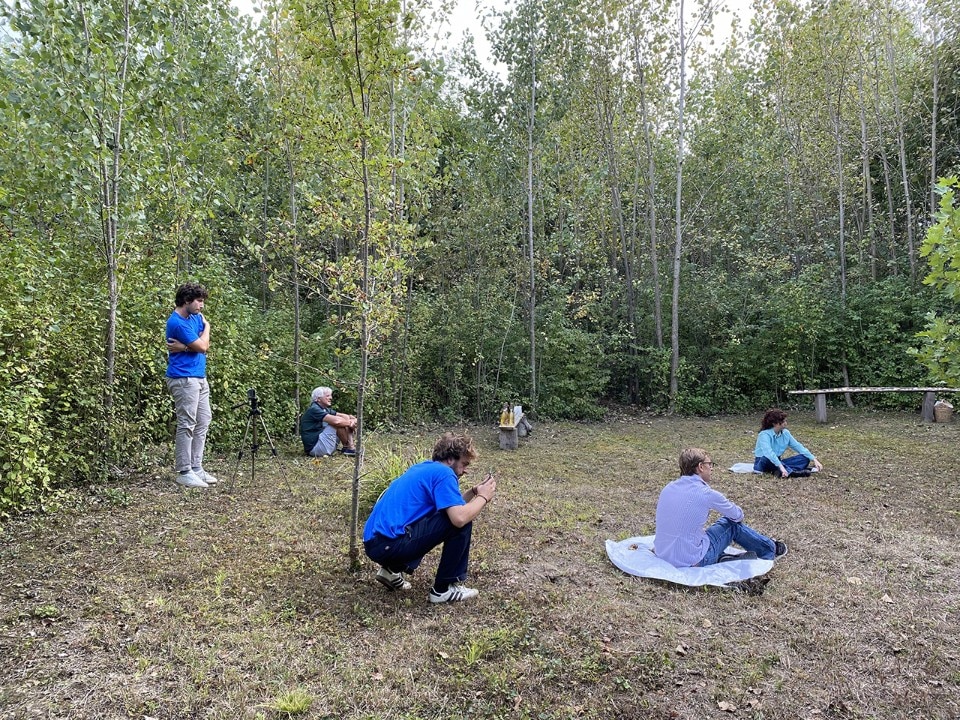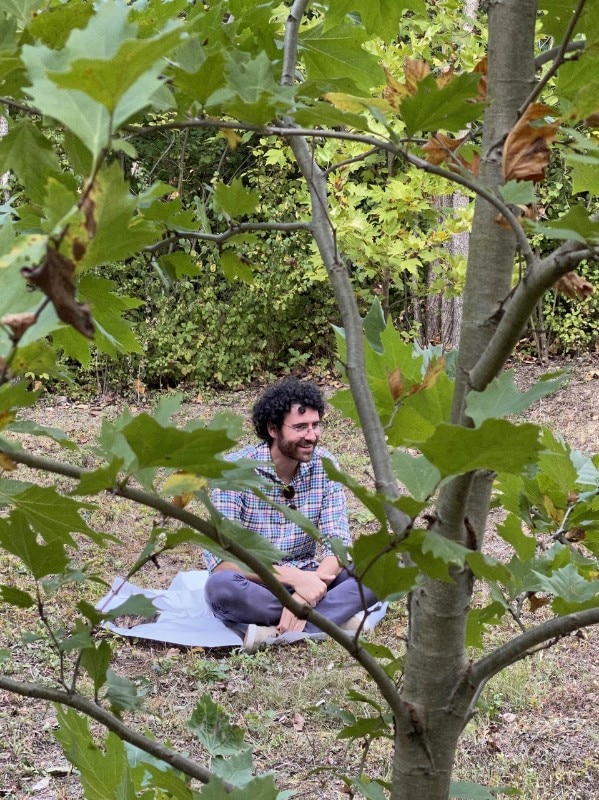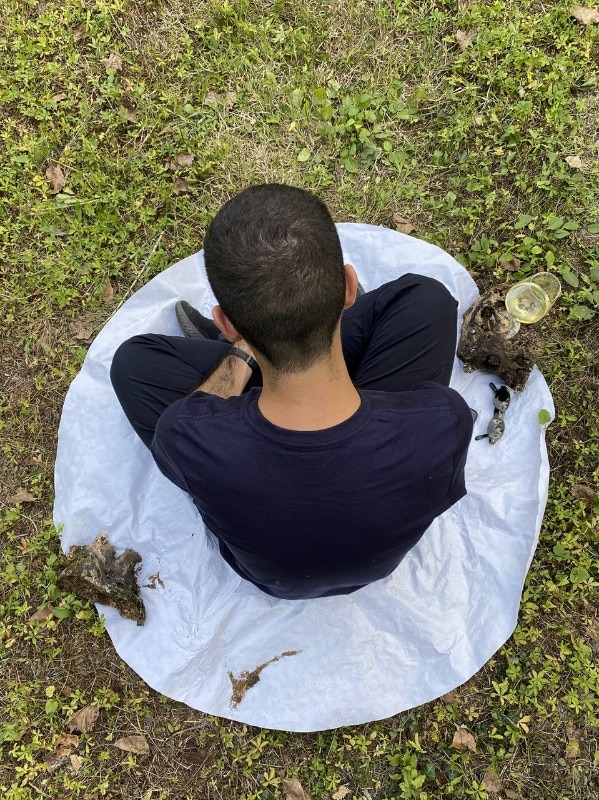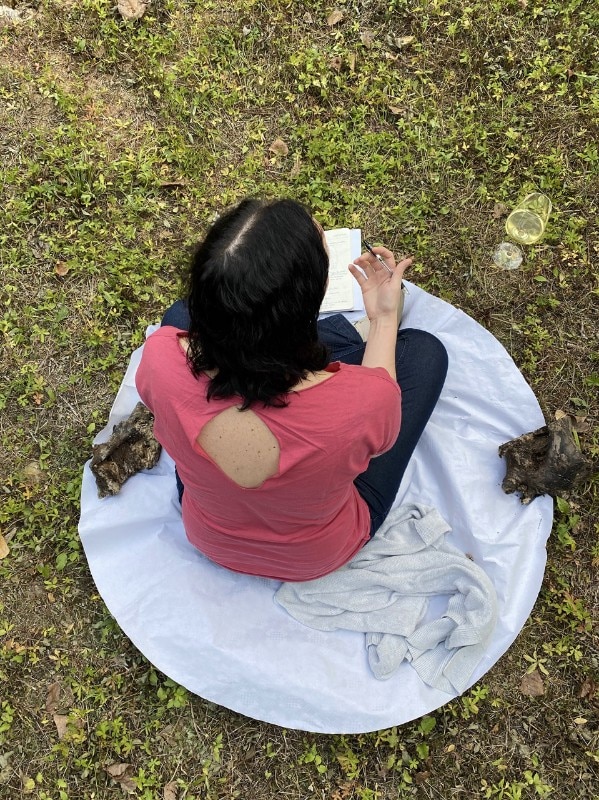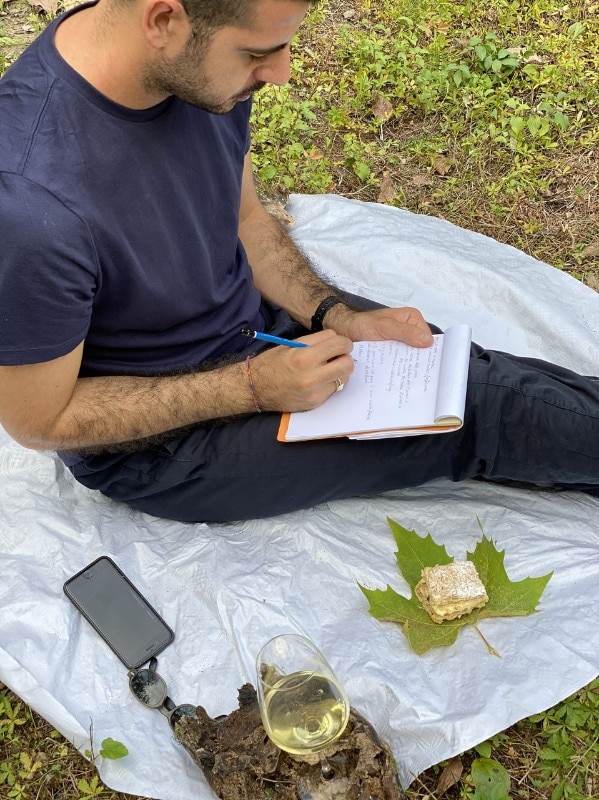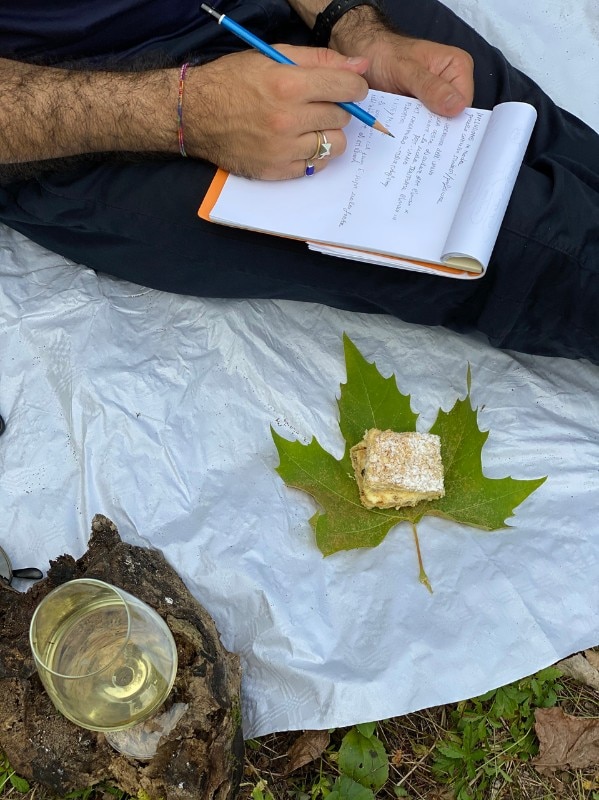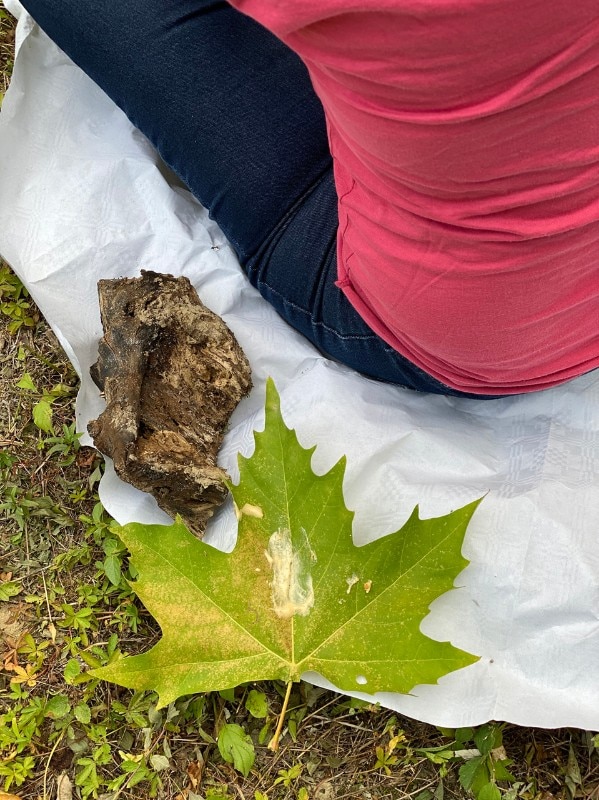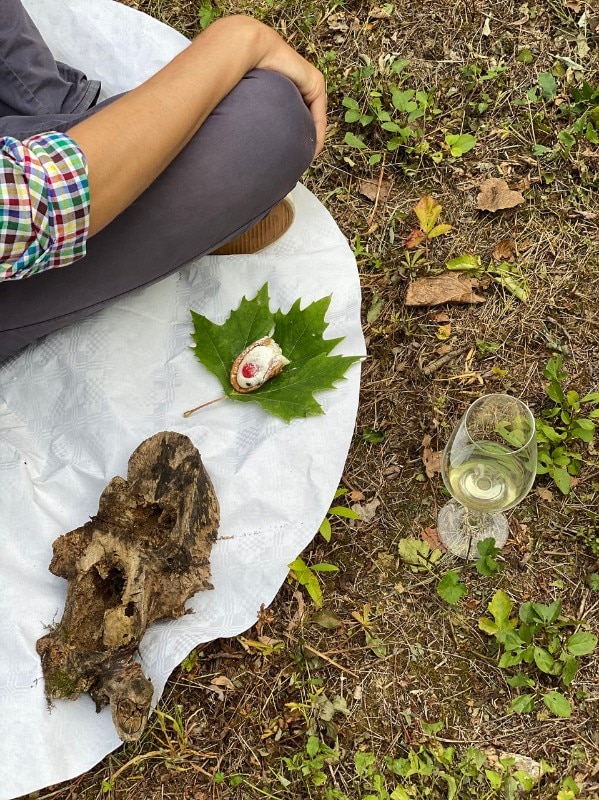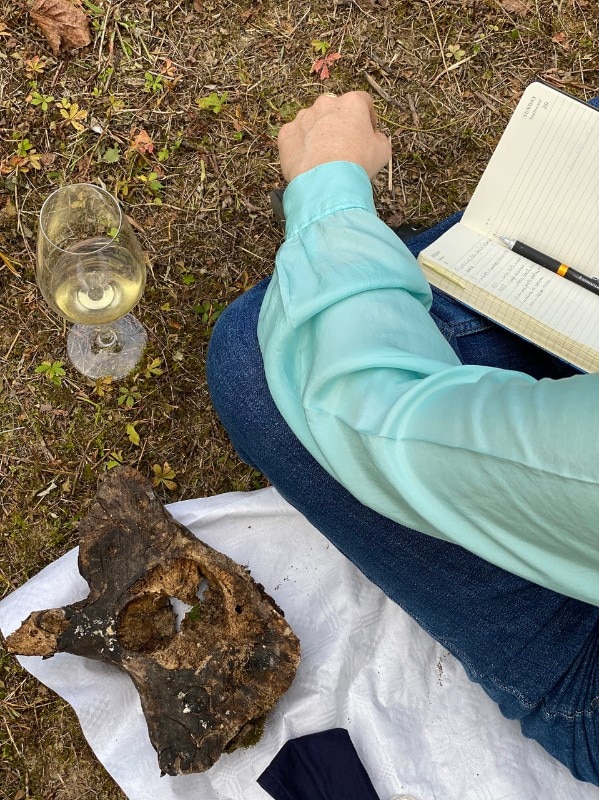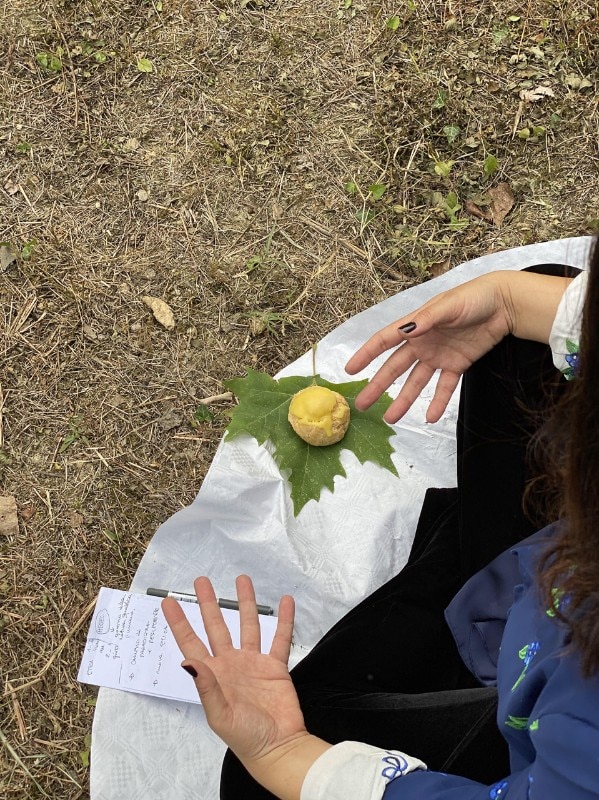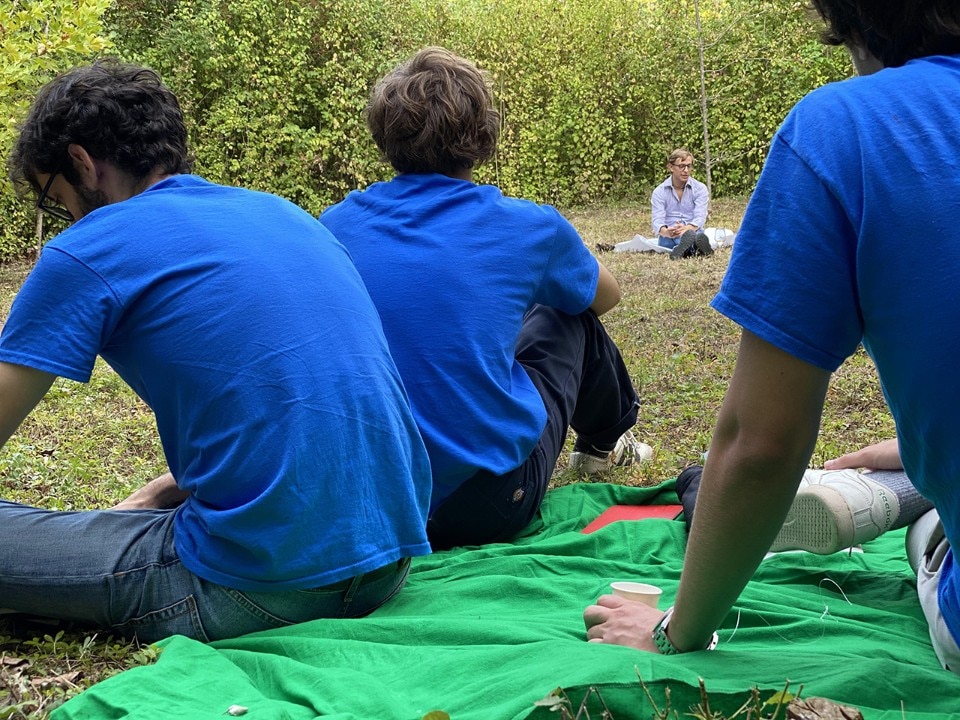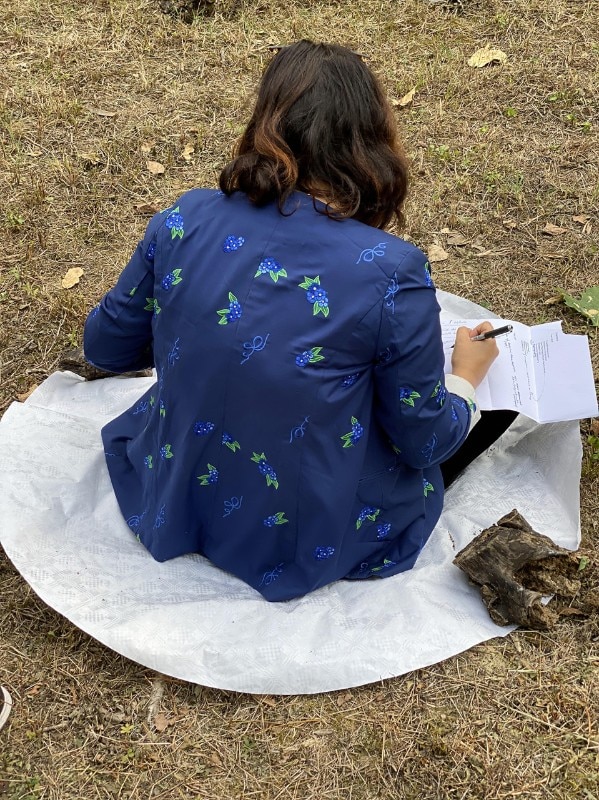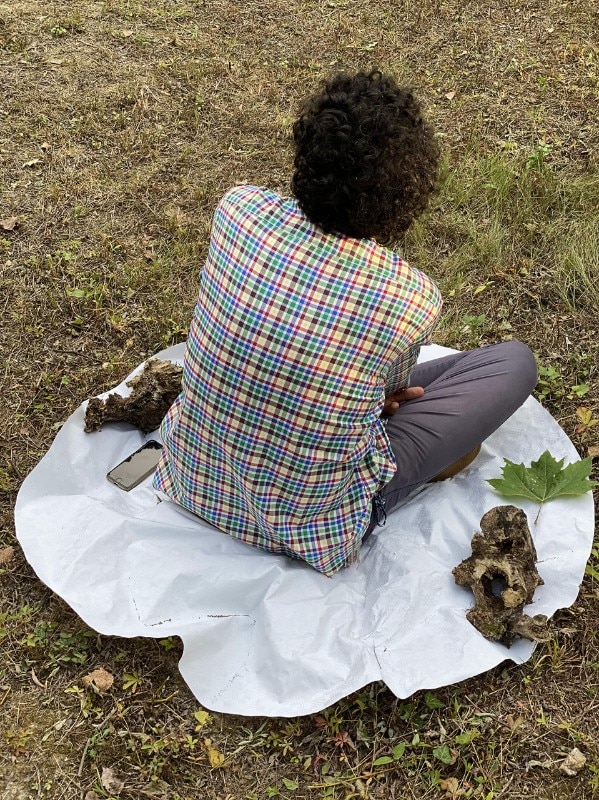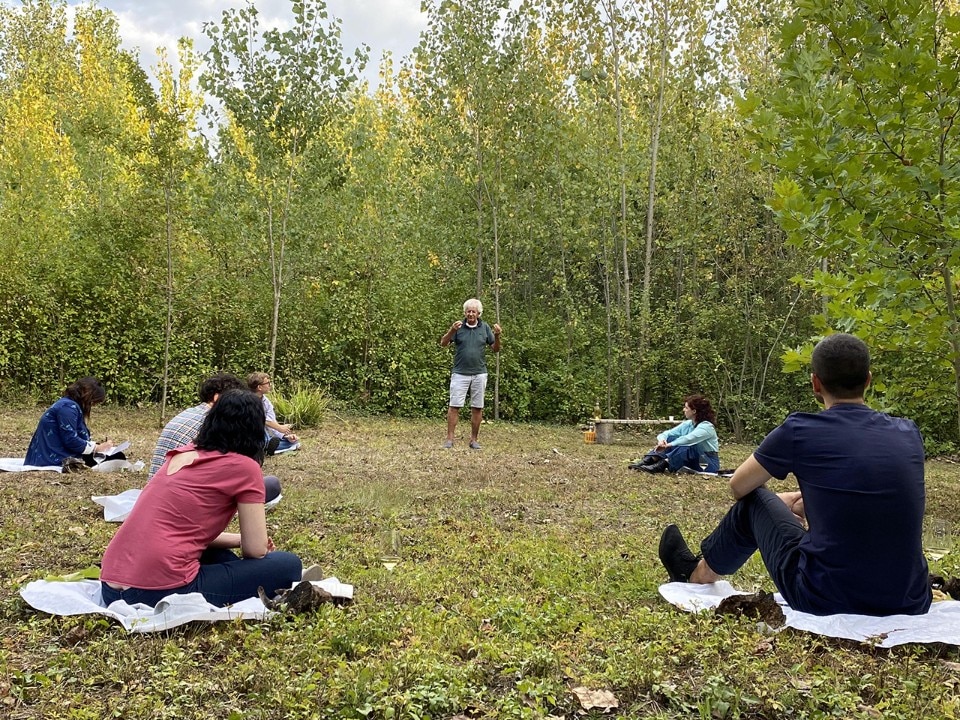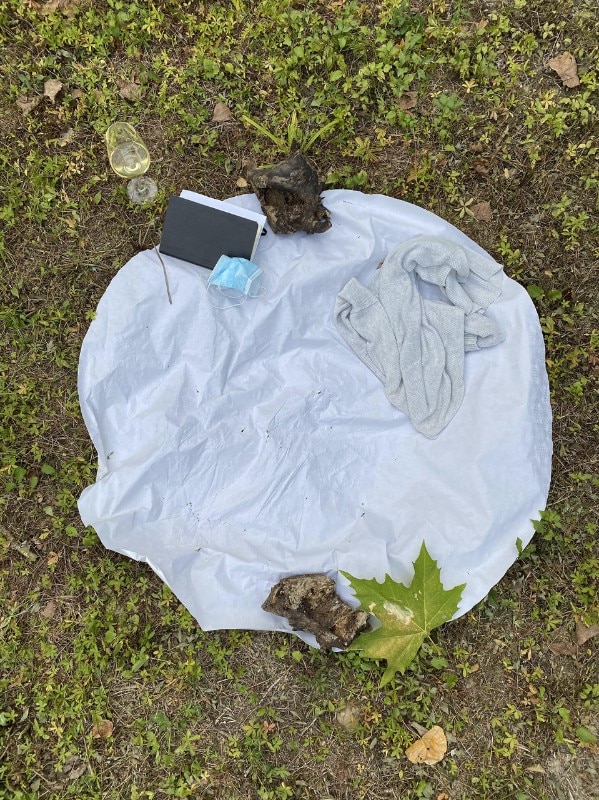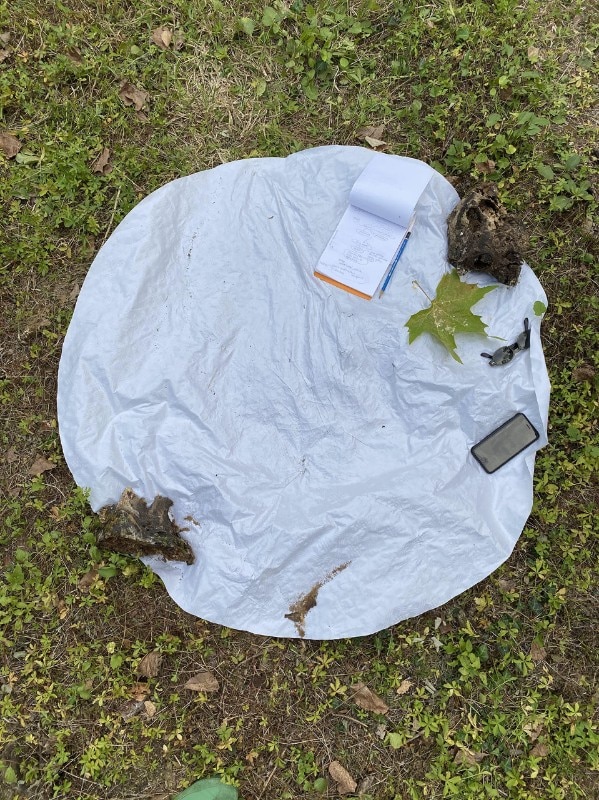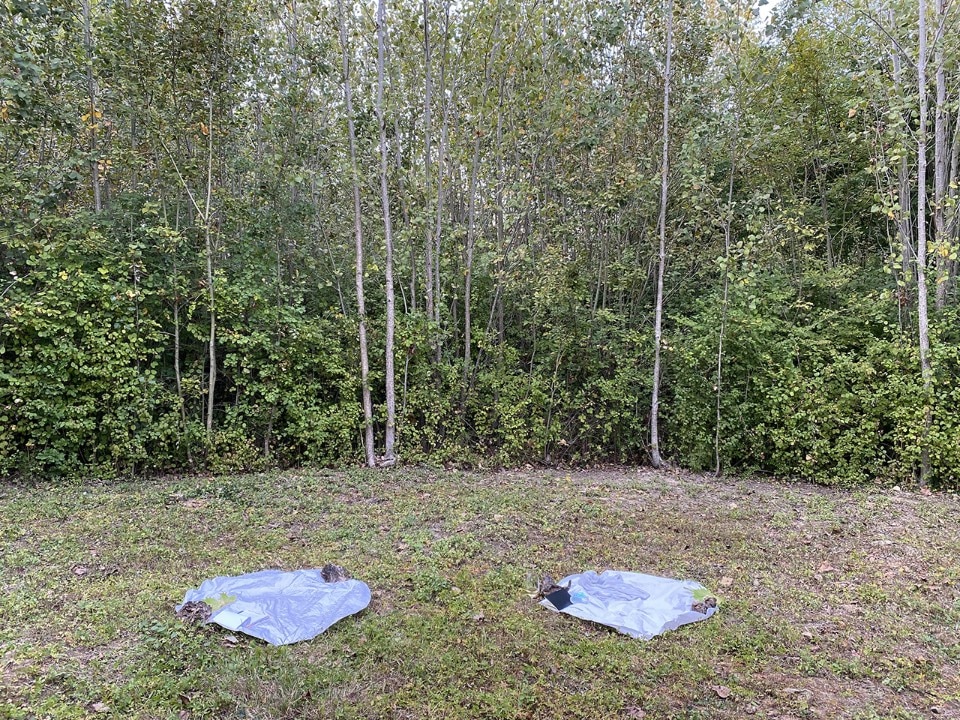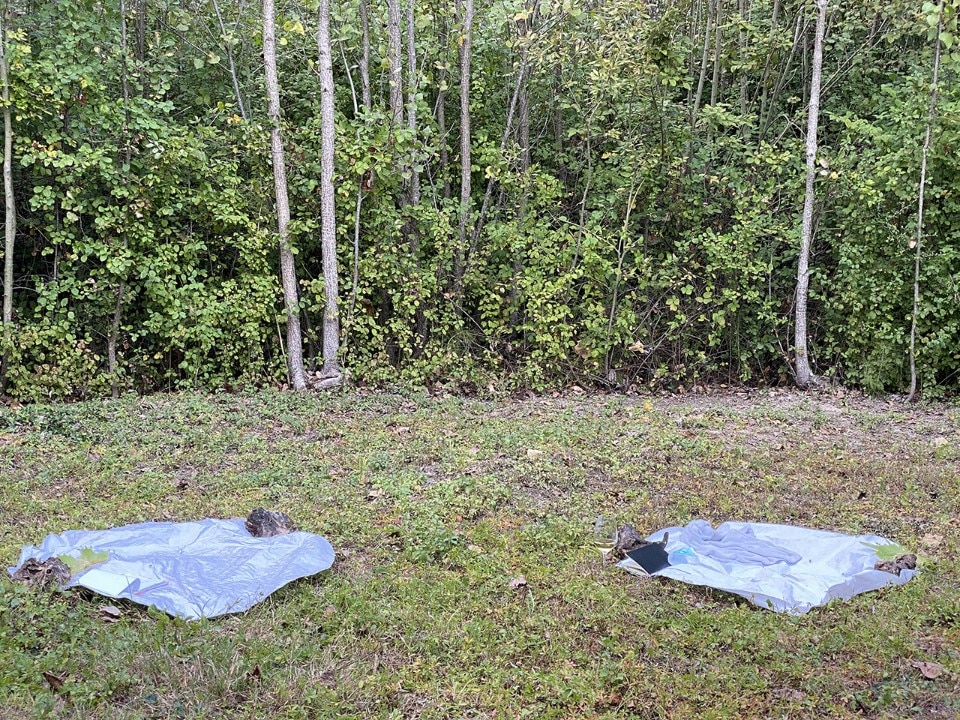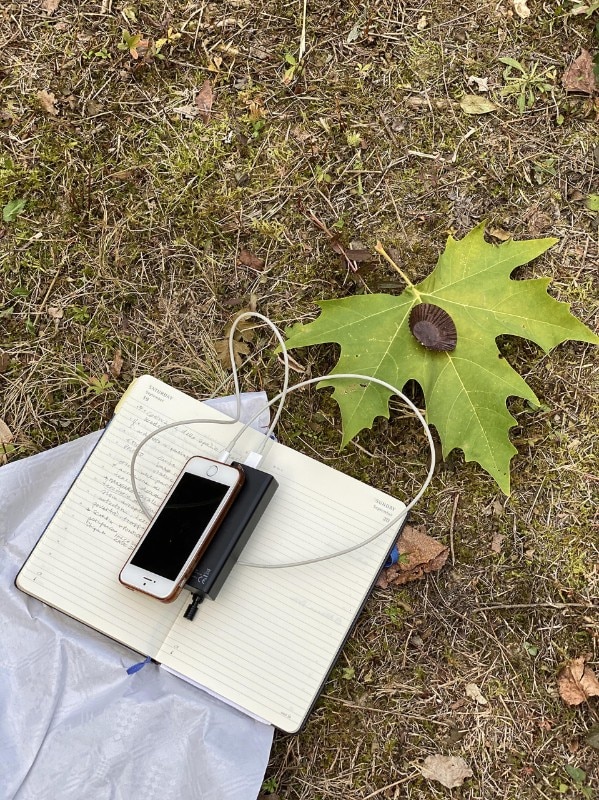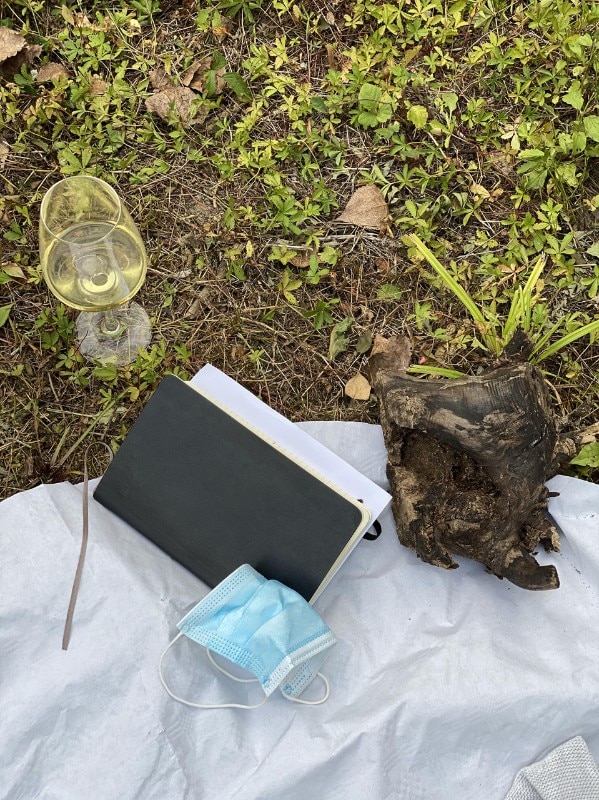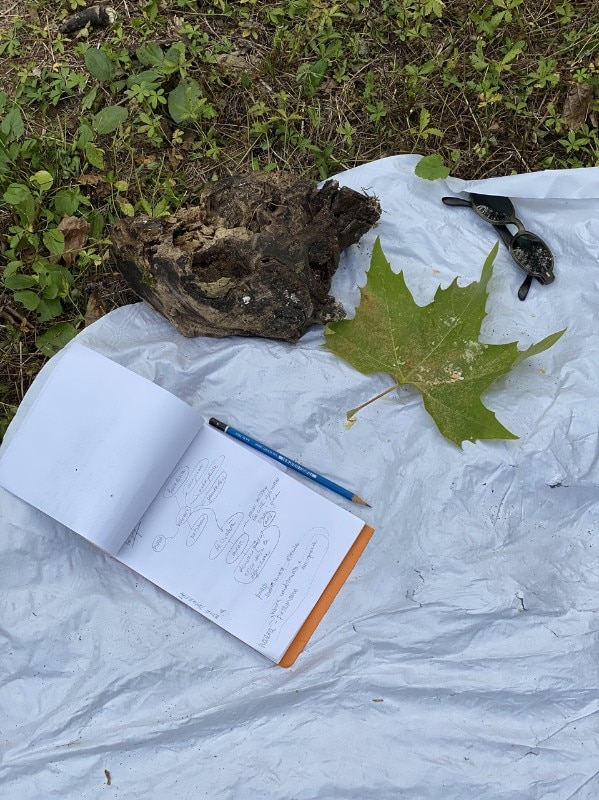A void of 250 sqm, for 10 meters in height is reached through a labyrinthine path dug into a dense vegetation. There are 2,500 cubic meters of plant mass removed from a poplar grove on the banks of the Sile, in the province of Treviso, Northern Italy. Here, the Veneto-Sicilian collective Ground Action – founded by Matteo D'Ambros, Sergio Sanna, and Roberto Zancan – has created (and continues to maintain) a circular space by subtraction.
In this place, where woodchips are produced, the group has created what it calls a “manifesto around the maintenance of nature, which is opposed to traditional gardening and landscape.” La Radura – this is the name of the intervention – has hosted several events in recent years, particularly during maintenance and cutting, and therefore during the solstices and equinoxes.
A place “hidden but close to civilisation,” not easily accessible.
The space is in fact reached through a path – which is a bit disorienting, almost a ritual access – in an atmosphere that gives a muffled sensation of what is external.
In the video, La Radura during the installation-banquet “Ultima notte d‘estate”, held in September 2019, in collaboration with HPO collective. Shooting by Dario Rizzi
Conceptually, this place distances itself from the idea of a garden that “denies nature,” says Ground Action, and continues: “our intervention is a middle way, but it has nothing to do with the Third Landscape either.” They explain that from this piece of countryside, cultivated traditionally, a vegetable mass corresponding to a certain CO2 absorption quantification has been subtracted. In simpler words, if we think of the quantity of wood chips subtracted with this operation, this corresponds to the amount needed to heat a house for a year. The subtraction of this mass took place in the ‘construction’ of what is paradoxically perceivedas an interior, which is also malleable in its declinations of use.
At the center of this natural theatre are two plane trees, an oak tree, and a plant that looks like a plum tree: all spontaneous. In the maintenance-performative process of cutting, the group tells us, we decide what to keep and whatnot, and we become aware of the growth we give up.
This is in opposition to the idea of genius, inviting us to reconsider what has never been thought of as having artistic value: the gesture of maintenance, that of the farmer who continually plans and redesigns the land with the soil and the plants. They named Joseph Beuys and “Sweeping Up,” a performance that took place in 1972, where the artist swept Karl-Marx-Platz in Berlin after the May Day parade.
So if we think of the landscape as an element of artistic value, then why not consider the gestures of the work deposited over time, by whom did that landscape take shape, as artistic?




